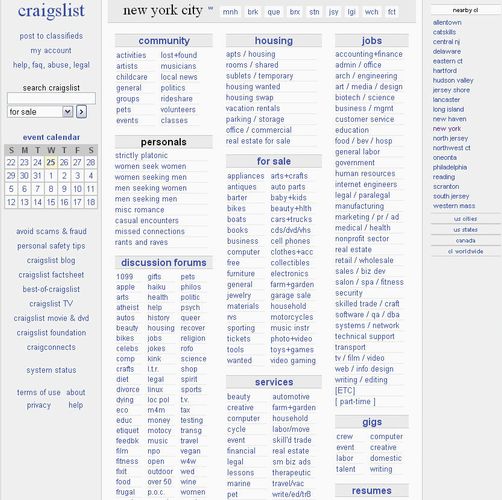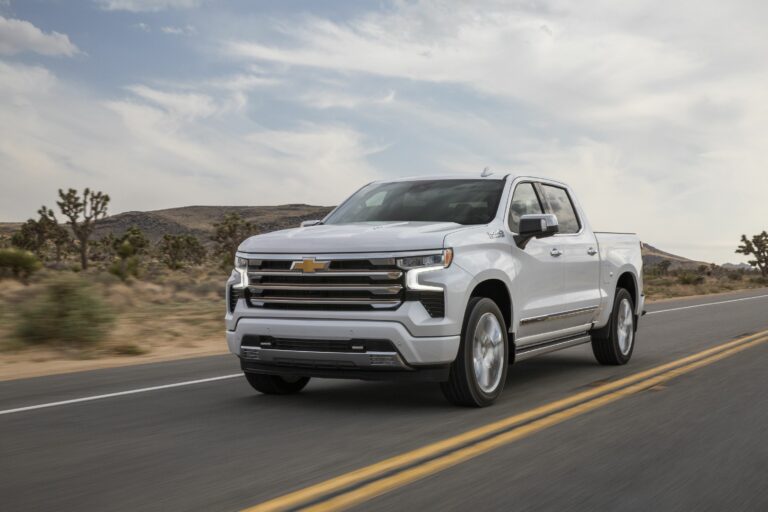All Car Brands In The World: A Comprehensive Guide to the Global Automotive Landscape
All Car Brands In The World: A Comprehensive Guide to the Global Automotive Landscape cars.truckstrend.com
The automotive industry is a fascinating, ever-evolving tapestry woven from engineering marvels, design philosophies, and rich histories. From the pioneering days of horseless carriages to the cutting-edge electric vehicles of today, the world of car brands is vast, diverse, and incredibly dynamic. Understanding "All Car Brands In The World" isn’t merely about listing names; it’s about comprehending the intricate web of manufacturers, their subsidiaries, market segments, and the global forces that shape what we drive. This guide aims to demystify this complex landscape, offering a comprehensive overview for enthusiasts, prospective buyers, and curious minds alike.
The Automotive Landscape: A Global Overview
All Car Brands In The World: A Comprehensive Guide to the Global Automotive Landscape
At its heart, the automotive world is a testament to human innovation and mobility. What started with a handful of pioneering companies over a century ago has blossomed into an industry supporting countless brands, each vying for a share of the global market. The sheer number of car brands active today is staggering, ranging from household names producing millions of vehicles annually to bespoke ateliers crafting a few dozen ultra-luxury models.
Geographically, the automotive industry is concentrated in several key regions. Asia, particularly Japan, South Korea, and increasingly China, dominates in terms of production volume and technological advancement. Europe boasts a legacy of luxury, performance, and design excellence, with Germany, Italy, France, and the UK leading the charge. North America, primarily the United States, remains a powerhouse, particularly in trucks, SUVs, and, more recently, electric vehicles. Each region contributes unique characteristics and brand identities to the global automotive mosaic.
Major Automotive Groups and Their Brands
One of the most crucial aspects of understanding car brands is recognizing that many seemingly independent names are, in fact, part of much larger corporate conglomerates. This strategy allows manufacturers to share research and development costs, leverage common platforms and components, and cater to diverse market segments under different brand identities. Here are some of the most prominent automotive groups and their extensive portfolios:
- Volkswagen Group (Germany): A titan of the industry, encompassing mainstream brands like Volkswagen and Skoda, premium offerings such as Audi and SEAT, luxury marques like Porsche, Bentley, and Lamborghini, and even high-performance Bugatti.
- Stellantis (Netherlands/USA/France/Italy): Formed from the merger of Fiat Chrysler Automobiles (FCA) and Groupe PSA, Stellantis is a truly global player. Its vast portfolio includes American icons (Jeep, Ram, Dodge, Chrysler), European mainstays (Peugeot, Citroën, Opel/Vauxhall, Fiat, Alfa Romeo), and luxury brands (Maserati, Lancia).
- Toyota Group (Japan): The world’s largest automaker by volume, known for its reliability and efficiency. Beyond the eponymous Toyota brand, it owns luxury division Lexus, compact car specialist Daihatsu, and truck manufacturer Hino.
- General Motors (USA): A historic American giant, GM’s core brands include Chevrolet, GMC, Buick, and Cadillac. It has significantly streamlined its global operations but remains a key player, especially in North America.
- Hyundai Motor Group (South Korea): A rapidly ascending force, this group includes the popular Hyundai and Kia brands, known for their value, design, and increasingly, their electric vehicle technology. Their luxury division is Genesis.
- BMW Group (Germany): Synonymous with driving pleasure, the BMW Group comprises the core BMW brand, the iconic Mini, and the ultra-luxury Rolls-Royce.
- Mercedes-Benz Group (Germany): The inventor of the automobile, Mercedes-Benz continues its legacy of luxury and innovation. Its portfolio primarily focuses on the Mercedes-Benz brand, including its AMG performance division, and the urban mobility brand Smart.
- Renault-Nissan-Mitsubishi Alliance (France/Japan): A strategic partnership that leverages shared platforms and technologies across its three main brands: Renault, Nissan, and Mitsubishi.
- Geely Holding (China): A rapidly expanding Chinese conglomerate that owns Volvo Cars, Polestar (EV performance), Lotus (sports cars), LEVC (London black cabs), and a growing number of Chinese domestic brands like Geely Auto and Zeekr.
Understanding these groups provides crucial context for the seemingly endless list of individual car brands.
Categories of Car Brands
To better navigate the vast world of car brands, it’s helpful to categorize them based on their primary market focus, price point, and vehicle type.
- Mass Market/Volume Brands: These brands aim for broad appeal, offering a wide range of vehicles at competitive prices. They prioritize reliability, fuel efficiency, and practicality.
- Examples: Toyota, Honda, Ford, Hyundai, Kia, Volkswagen, Nissan, Chevrolet.
- Premium/Luxury Brands: Focusing on superior materials, advanced technology, refined driving experiences, and brand prestige, these brands cater to a more affluent clientele.
- Examples: Mercedes-Benz, BMW, Audi, Lexus, Cadillac, Genesis, Volvo.
- Ultra-Luxury/Exotic Brands: At the pinnacle of automotive extravagance, these brands produce limited numbers of highly exclusive, often custom-built vehicles with unparalleled craftsmanship, performance, and price tags.
- Examples: Rolls-Royce, Bentley, Ferrari, Lamborghini, Aston Martin, Bugatti, McLaren.
- Performance/Sports Car Brands: Specializing in high-performance vehicles designed for exhilarating driving dynamics, often with a focus on speed, handling, and track capability.
- Examples: Porsche, Ferrari, Lamborghini, McLaren, Lotus, Corvette (Chevrolet).
- Electric Vehicle (EV) Specialists: A rapidly growing segment comprising brands solely or primarily focused on electric vehicles, often pioneering new technologies and business models.
- Examples: Tesla, Rivian, Lucid, Nio, Xpeng, BYD, Polestar.
- Niche/Boutique Brands: Smaller manufacturers often with a unique design philosophy, specific engineering focus, or handcrafted approach, producing limited quantities of highly specialized vehicles.
- Examples: Morgan (classic British sports cars), Koenigsegg (hypercars), Pagani (hypercars).
- Emerging Market Brands: Brands that have risen to prominence in developing economies, increasingly expanding their global reach and challenging established players.
- Examples: Geely, SAIC (MG), Chery, Great Wall Motors (Haval), Tata Motors, Mahindra.
Factors Shaping the Brand Landscape
The world of car brands is constantly in flux, influenced by a multitude of factors:
- Technological Advancements: The shift to electric vehicles (EVs), the development of autonomous driving capabilities, and increasing connectivity are fundamentally reshaping brand offerings and consumer expectations. Brands that innovate thrive, while those that lag risk obsolescence.
- Globalization and Market Expansion: As economies grow and trade barriers fall, brands expand into new markets, leading to increased competition and the emergence of new regional players with global aspirations.
- Mergers, Acquisitions, and Alliances: To gain economies of scale, access new technologies, or expand market share, companies frequently merge, acquire competitors, or form strategic alliances, constantly redrawing the corporate map.
- Sustainability and Environmental Regulations: Stricter emissions standards and growing environmental consciousness push brands towards greener technologies and sustainable manufacturing practices, impacting product development and marketing.
- Consumer Preferences and Demographics Shifts: The rise of SUVs, the demand for personalization, the influence of digital natives, and changing attitudes towards car ownership (e.g., car-sharing) all dictate what types of vehicles brands produce.
How to Navigate the World of Car Brands: Practical Advice
For a consumer, the vast number of car brands can be overwhelming. Here’s how to approach choosing the right one:
- Define Your Needs: Before looking at brands, determine your priorities: budget, vehicle size, fuel type, intended use (commute, family, off-roading, performance), desired features, and long-term ownership costs (maintenance, insurance, resale).
- Research Reliability and Safety: Reputable organizations like J.D. Power, Consumer Reports, and government safety agencies (NHTSA, IIHS) provide valuable data on brand reliability, recall history, and crash test ratings.
- Understand Brand Reputation and Values: Some brands are known for luxury, others for ruggedness, and some for innovation. Align your personal values with a brand’s ethos. Do you prioritize sustainability, performance, or cutting-edge technology?
- Consider Future Trends: If you’re buying for the long term, consider how a brand is adapting to the future. Are they investing in EVs? What’s their strategy for connectivity and autonomous features?
- Test Drive, Test Drive, Test Drive: There’s no substitute for experiencing a vehicle firsthand. Drive multiple models from different brands to compare driving dynamics, comfort, technology interface, and overall feel.
- Evaluate Dealer Experience and Service Network: A good relationship with your dealership for sales and service can significantly impact your ownership experience. Research local dealer reviews.
- Factor in Resale Value: Some brands hold their value better than others. This can be a significant financial consideration when you eventually decide to sell or trade in your vehicle.
Challenges and Opportunities for Car Brands
The automotive industry, while robust, faces significant challenges and opportunities:
- Challenges: Intense global competition, volatile raw material prices, complex supply chain disruptions (e.g., semiconductor shortages), stringent environmental regulations, and the immense investment required for electrification and autonomous driving technologies. Maintaining brand differentiation in an increasingly homogenized EV market is also a key hurdle.
- Opportunities: The massive shift to electric vehicles opens new avenues for innovation and market leadership. The rise of connectivity allows for new services and revenue streams (e.g., over-the-air updates, subscription features). Developing markets offer growth potential, and new mobility solutions (car-sharing, ride-hailing) present opportunities for brands to diversify their business models beyond traditional car sales.
Illustrative Table: A Glimpse into Car Brand Categories and Price Ranges
It is impossible to provide a table containing "all complete information about all car brands in the world" with "price," as there are thousands of brands (including defunct, regional, and niche ones), and vehicle prices vary immensely by model, trim, region, year, and market conditions. However, the table below illustrates the diversity of globally recognized car brands by category and provides representative average starting price ranges for their new vehicles in major markets (prices are highly generalized and subject to change).
| Category | Representative Brands (Examples) | General Average Starting Price Range (USD) * | Key Characteristics |
|---|---|---|---|
| Mass Market | Toyota, Honda, Ford, Hyundai, Kia, Volkswagen, Nissan, Chevrolet | $20,000 – $45,000 | Affordability, reliability, practicality, broad model range. |
| Premium/Luxury | Mercedes-Benz, BMW, Audi, Lexus, Cadillac, Volvo, Genesis | $40,000 – $80,000 | Refined design, advanced tech, comfort, performance, brand prestige. |
| Ultra-Luxury/Exotic | Rolls-Royce, Bentley, Ferrari, Lamborghini, Aston Martin, McLaren | $200,000 – $1,000,000+ | Exclusivity, bespoke craftsmanship, extreme performance, heritage. |
| EV Specialists | Tesla, Rivian, Lucid, Polestar, Nio, Xpeng, BYD | $40,000 – $150,000+ | Electric powertrains, innovative tech, focus on sustainability. |
| Niche/Boutique | Morgan, Koenigsegg, Pagani, Caterham | $50,000 – $3,000,000+ | Unique design, handcrafted, limited production, specialized focus. |
*Note: Prices are highly generalized average starting points for new vehicles and can vary wildly based on model, trim level, optional features, regional taxes, and market conditions. This table is for illustrative purposes only.
Frequently Asked Questions (FAQ)
Q1: How many car brands are there in the world?
A1: It’s impossible to give an exact number. If you count every active manufacturer, including small, niche, and regional ones, it could be well over 500. If you include defunct brands, the number would be in the thousands. The automotive landscape is constantly changing with new entrants and brands disappearing.
Q2: Which country has the most car brands or manufacturers?
A2: Historically, the United States, Germany, and Japan have been major players. However, China has seen an explosion of new car brands, particularly EV manufacturers, in recent decades, likely making it the country with the most active brands today.
Q3: What are the oldest car brands still operating today?
A3: While definitions vary, some of the oldest continually operating car brands include Mercedes-Benz (tracing roots to Karl Benz’s 1886 patent), Peugeot (started as a bicycle manufacturer in 1810, cars from 1891), Daimler (1890, merged into Mercedes-Benz), and Tatra (1897).
Q4: Are new car brands still emerging?
A4: Absolutely. The shift to electric vehicles has lowered barriers to entry for new manufacturers, leading to a surge of EV startups (e.g., Rivian, Lucid, Nio, Xpeng) challenging established automakers.
Q5: What’s the difference between a car brand and a car manufacturer?
A5: A car manufacturer (or automotive group) is the parent company that designs, builds, and sells vehicles. A car brand (or marque) is a specific name or trademark under which a manufacturer markets its vehicles. For example, Volkswagen AG is the manufacturer, and Volkswagen, Audi, Porsche are some of its brands.
Q6: Why do some car brands disappear?
A6: Brands disappear for various reasons, including bankruptcy, mergers and acquisitions (where the brand is retired by the new owner), inability to compete with larger players, failure to adapt to market changes (e.g., shifting consumer preferences, new technologies), or financial difficulties within the parent company.
Conclusion
The world of car brands is a testament to human ingenuity and our enduring desire for mobility. It’s a vibrant, complex ecosystem of innovation, competition, and constant evolution. From the century-old giants to the nimble EV startups, each brand contributes to the rich tapestry of automotive history and shapes the future of transportation. Understanding this landscape not only informs our choices as consumers but also offers insights into global economics, technological progress, and cultural trends. As the industry continues its transformative journey towards electrification and autonomous driving, the list of "All Car Brands In The World" will undoubtedly continue to grow, shift, and surprise us, promising an exciting road ahead.





